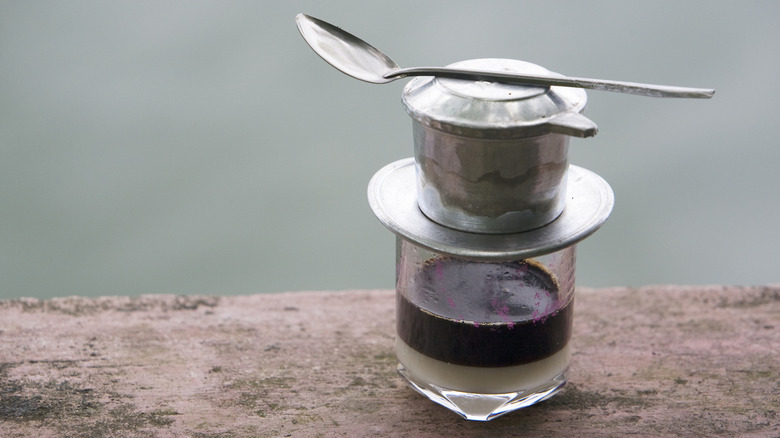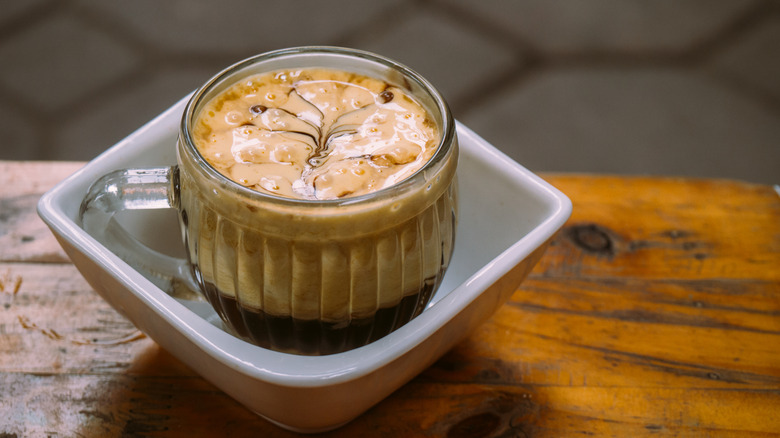The Process That Makes Vietnamese Coffee So Strong
If you're looking to add a bit more kick to your morning routine, you might want to try Vietnamese coffee, as it's recognized for its powerful flavor and significant caffeine dosage. There are many elements that contribute to its strength, but first on the list is the brewing method. Traditional Vietnamese coffee uses a phin filter, which is a small metal device that sits over a cup. Hot water is poured over coarsely ground coffee beans in the filter, and the coffee slowly drips down into the cup. This slow drip method means a longer extraction time, pulling out more caffeine and flavor from the grounds.
The grind size for Vietnamese coffee is usually medium-coarse, like that for a French press, allowing for proper extraction with the phin filter. Some people prefer a finer grind, like that used for drip coffee, which can make the brew even stronger. The higher ratio of coffee to water with the phin filter also contributes to the coffee's potency.
Another major factor in the strength of Vietnamese coffee is the variety of coffee used: caffeine-rich robusta beans. This type of bean is widely grown in Vietnam and contains nearly double the caffeine of the more common arabica beans. Robusta coffee is known for its strong, chocolatey, and nutty taste. Roasting these robusta beans is another factor: Vietnamese coffee is typically a medium-to-dark roast, which strengthens the coffee's boldness.
The many coffee drinks of Vietnam
Vietnamese coffee culture is expansive, with lots of cool cafe culture throughout the country. One popular drink at all Vietnamese cafes is cà phê sữa đá, or Vietnamese iced coffee. This is a fan favorite, in which coffee made using the phin filter is mixed with sweetened condensed milk and poured over ice. The condensed milk adds a creamy sweetness that evens out the coffee's bitterness. A more decadent order is cà phê trứng, or Vietnamese egg coffee, which is from the capital, Hanoi. This drink is made up of black coffee sweetened using a custard made from egg yolk and condensed milk.
For those who like things milder, you can try white coffee, known as bạc xỉu. This drink has a higher milk-to-coffee ratio, using both condensed milk and fresh milk, making it sweeter and a tad weaker. Cà phê dừa, or coconut coffee, is another refreshing option that mixes strong Vietnamese coffee with coconut milk, condensed milk, and ice, with the coconut milk adding a lighter, refreshing creaminess.
There are also some more unusual coffee drinks in Vietnam, like cà phê muối, or salt coffee. This drink adds savory and salted caramel-esque notes to Vietnamese coffee, as it combines robusta coffee with a bit of salt. Cà phê sữa chua, or yogurt coffee, combines black coffee with slightly sweetened yogurt. The yogurt's tanginess complements the black coffee, resulting in a creamy and slightly thicker drink.


